|
Diseases of Poultry
By Ivan Dinev, DVM, PhD
|
NEWCASTLE DISEASE
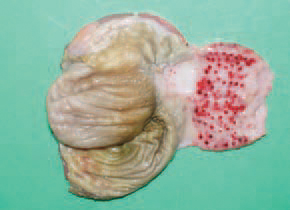
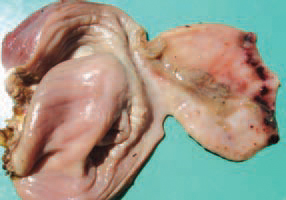
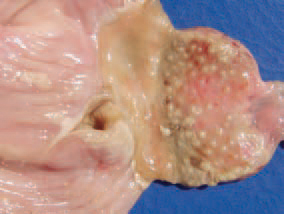
255.256.257.The Newcastle disease (ND) is a highly contagious disease in many species of domestic, exotic and wild birds that, depending on its tropism, is characterized by marked variations in morbidity, death rate, symptoms and lesions. The clinico-morphological signs possess a distinct viscerotropic or neurotropic character. In the viscerotropic form, haemorrhagic diphtheritic lesions of the entire alimentary tract, from the beak to the vent, are present. The haemorrhages of gizzard epithelium are remarkable. The mucous coat is oedematous, covered with thick mucus and mottled with haemorrhages varying from single to multiple, sometimes gathered at the boundaries with the gizzard or the oesophagus.


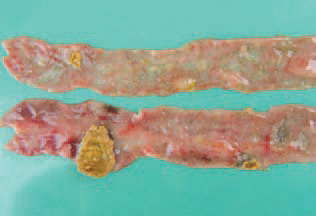
258.259.260.Typical for this form are the haemorrhagic necrotic and focal diphtheroid lesions affecting the mucosa of the buccal cavity (258), the stomach and the intestines (259, 260). The disease is generally prevalent in hens, more rarely in turkeys, exotic or wild birds. Birds at any age are susceptible. It is caused by a paramyxovirus. Depending on their pathogenicity, the numerous known strains are classified as lentogenic, meso-genic and velogenic. The vaccines made of lentogenic strains provoke a shorter immunity that requires a revaccination. The vaccines from mesogenic strains result in a lasting immunity, but could provoke a lethal issue especially in birds without a primary immunity created on the basis of lentogenic vaccinal strains.

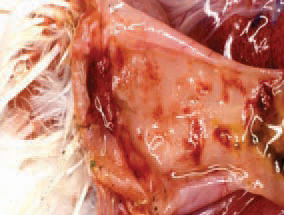
261.262.A frequent finding is the enlargement and haemorrhages of caecal tonsils (261) and haemorrhagic cloacitis (262). Usually, these lesions begin from the lymphoid tissue of the mucous coat. Virus-containing excreta of infected birds, that contaminate the forage, water and the environment, are the source of infection. The infection is transmitted mainly by an oral route, the airborne or contact transmission being more infrequent. The virus, contained in incubated eggs, results in embryo's death and then perishes. There is no permanent carriership of the virus. An important factor in the trans-mission of velogenic viruses could be the exotic birds and fighting cocks. The death rate could arrive at 70-100%.
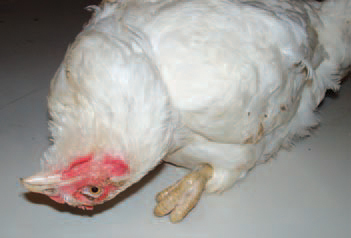
263.The neurotropic form of the disease is clinically manifested by ataxia, opisthotonus, torticolis, paresis and paralysis of legs. This form is frequently accompanied by respiratory symptoms. Histo-pathologically, the picture of nonpurulent lymphocytic encephalomyelitis is observed.
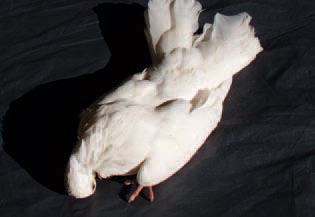
264.The lesions of paramyxovirosis in pigeons are entirely identical. On the basis of the history and the clinico-morphological signs, a tentative diagnosis could be made, but its laboratory confirmation is mandatory. ND should be distinguished by avian influenza, fowl cholera etc.






